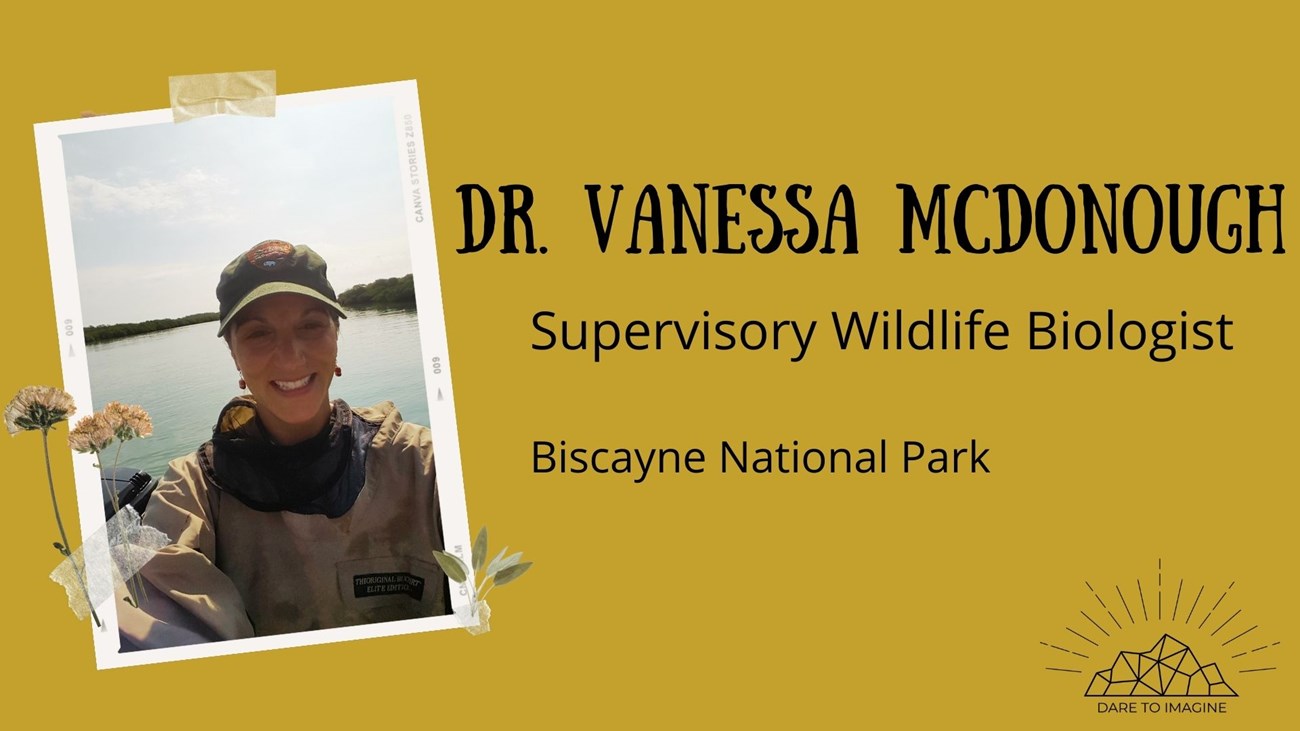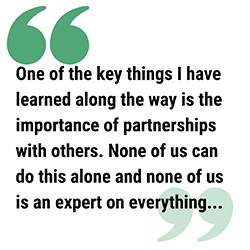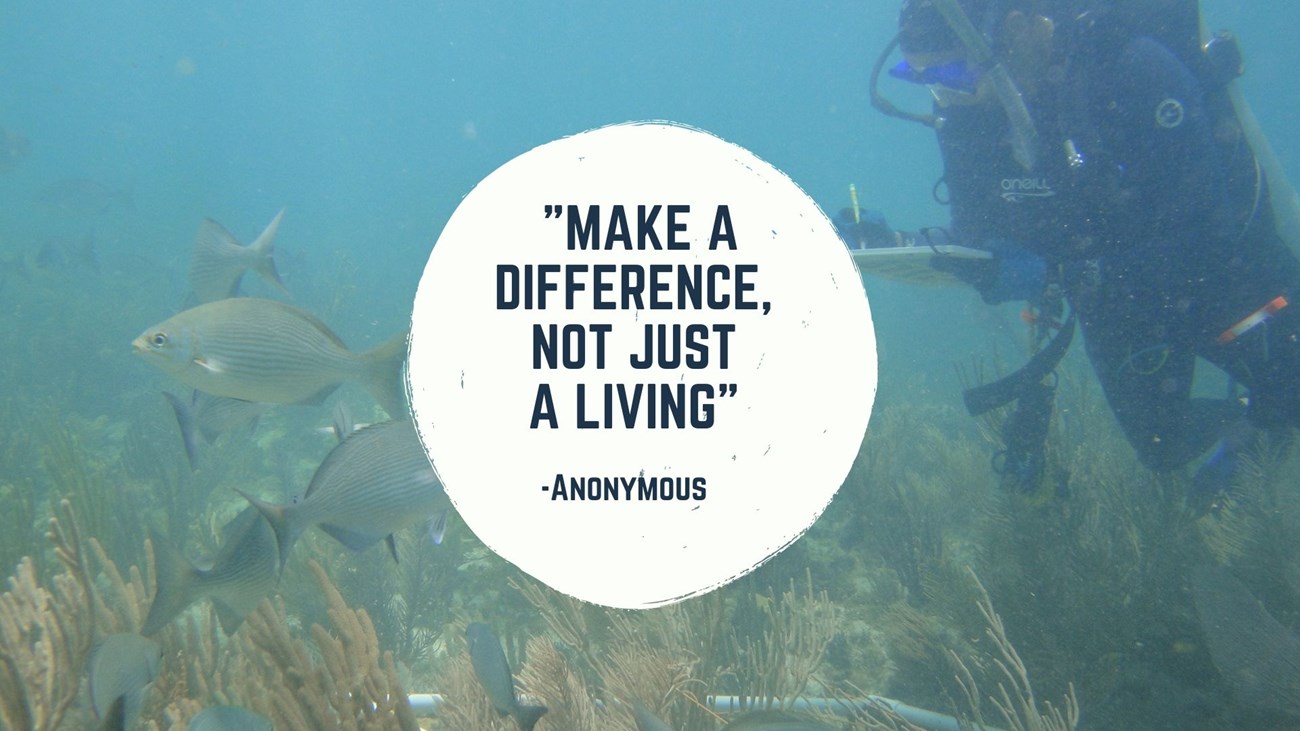Last updated: January 27, 2022
Article
Dare to Imagine: Dr. Vanessa McDonough

Women (and men) Lifting Women
"Vanessa is a truly amazing scientist, park professional, and human being. She is a respected fixture at Biscayne National Park, who tackles a wide range of management challenges. She is a gifted communicator who readily shares her work with passion. And over the years, Vanessa has been a strong mentor to countless aspiring professionals in the early stages of their own careers. We need a Vanessa in every park!"
-Larry Perez, Communications Coordinator, Climate Change Response Program
Vanessa, what project would you like to highlight?
Marine debris removal work which entails cleaning up reefs of derelict fishing gear and other (mostly) fishing and boating-related trash, as well as cleaning up our coastlines (including sea turtle nesting beaches) from all the floating garbage that washes ashore.
Will you tell us a little about that project?
Our marine debris removal work is multi-faceted. From the most simple perspective, we do it because pollution is ugly and visitors to a national park shouldn't be seeing derelict lobster traps and lost anchors on the reef and piles of plastic water bottles and other debris on our beaches. But what I consider a more important aspect of why we do this work is to improve habitat quality and to better understand the impacts of this debris on wildlife and habitat. Our work goes beyond simply picking up garbage; we inventory what we collect, we weigh or measure it, and we categorize it by its source (trap fisheries, hook-and-line fisheries, boating, diving, food-and-drink etc.).


What was your path like? How did you get to where you are now?
I entered federal service through a National Oceanic and Atmospheric Administration (NOAA) fellowship which I received while in graduate school earning my PhD in biology. After a couple of years at NOAA, I transferred to Biscayne National Park, where I have had the opportunity to participate in an incredibly diverse array of resource management activities: fishery management, sea turtle nesting monitoring, invasive plant control, endangered cactus salvage and rearing, studying rare palms, researching the lionfish invasion, responding to wildlife strandings etc. One of the key things I have learned along the way is the importance of partnerships with others. None of us can do this alone and none of us is an expert on everything, but when we come together, large projects become much more manageable and the expertise of many ensures the job is done correctly.
What was the hardest part about getting where you are? How did you overcome it?
The hardest part about getting where I am was accepting the reality that we will likely never have all the resources (time, funds, staffing) to tackle the many resource management challenges we face. It can be easy to get discouraged and exasperated. I overcome this by learning to accept that we can only do what we have the resources to do, prioritizing work activities, and having appropriate expectations, while also always trying to think creatively about how to partner with others who might be able to complement our resources or provide additional resources we are lacking.What are you most proud of?
I am proud of the way I have managed and grown the Fish and Wildlife Inventory and Monitoring Program at Biscayne National Park. Over the years, we have expanded what we do, incorporating newly arising ecological and environmental issues (invasive lionfish, pythons, coral disease etc) and increased our partnerships and collaborative efforts with other scientists to provide the best resource management that we can.Favorite Quote?

The Dare to Imagine Project is funded by an Innovation and Impact Grant provided by the National Park Foundation. This grant supports projects and programs that help the National Park Service share a more comprehensive American narrative that includes the voices of women whose vision, tenacity, and resilience moved them to climb mountains, take down barriers, shape history, protect the environment, and lead social movements. Read more of these women's stories on the Dare to Imagine page.
